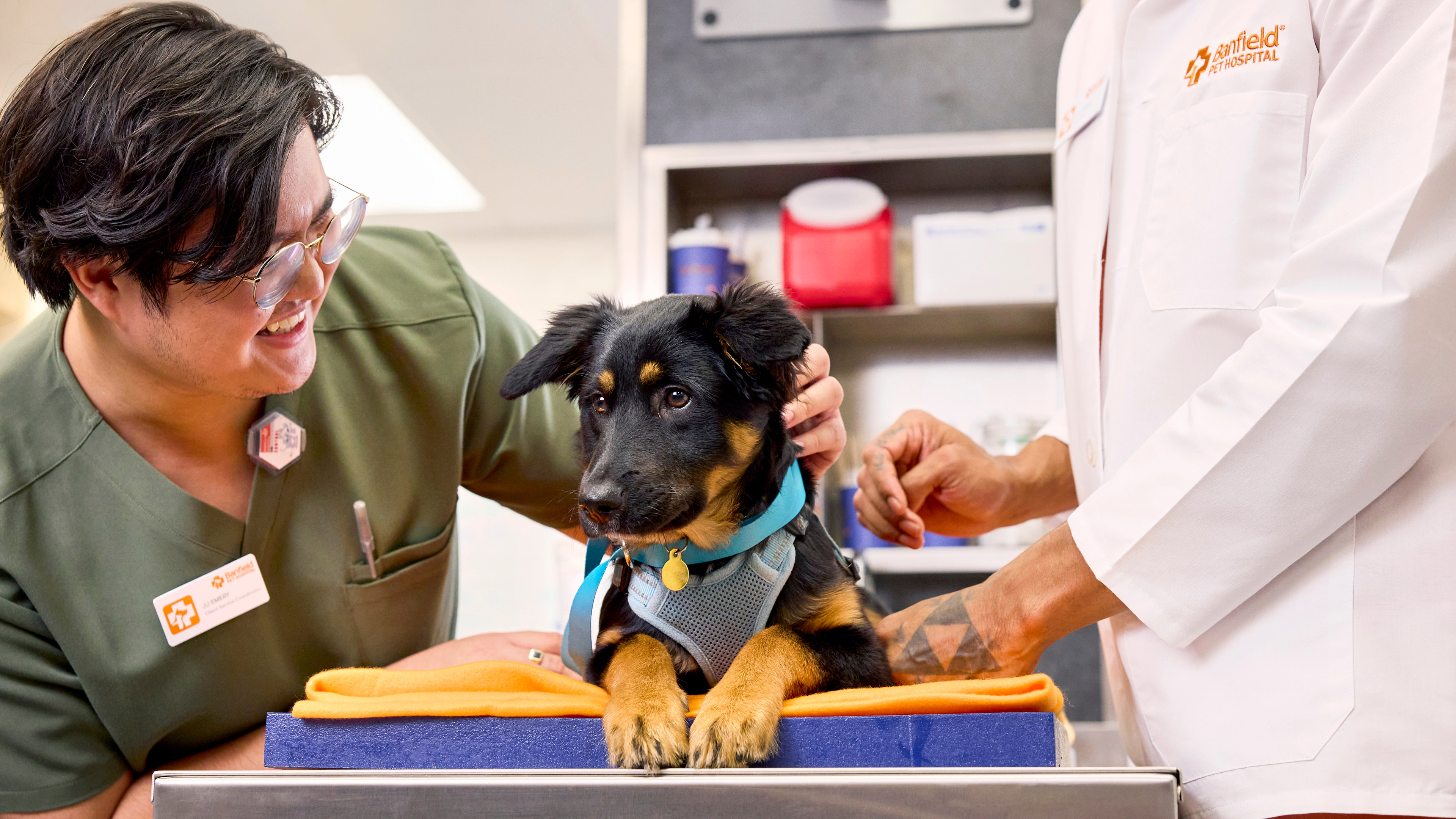winter safety tips for your pet
The winter months can be tough for humans and animals alike. While some animals are designed to handle cooler temps, that doesn’t mean they’re not vulnerable to cold exposure. In this blog, we’ll go over ways you can protect your dog or cat during the chilly seasons of the year.
No one left behind
Not all breeds are equipped for cold temps. While thicker-coat breeds such as Huskies, Akitas, Newfoundlands, and Saint Bernards are known for handling the cold better, smaller, shorter-coat, hairless, and even some long-coat breeds may not fare well.
If your pet must go outside in the winter, it’s important not to leave them unattended. Both dogs and cats can develop frostbite when temperatures drop below freezing. In fact, if it’s below freezing, try to limit your pet’s outdoor time as much as possible.
Just like how super cold temps are uncomfortable and dangerous for us, it’s the same for our furry friends, especially since they usually walk around naked. And please don’t leave your pet in a freezing car, where they can develop hypothermia.
Signs of hypothermia include lethargy, increased heart rate, shivering, and rapid breathing. If you believe your pet is experiencing hypothermia, please call your vet right away.
Pets with chronic conditions such as diabetes or kidney disease, or very young or old dogs or cats, may have difficulty regulating their body temperature. It’s important to stay extra vigilant on keeping these little cuties warm and safe.
Protect those paws
If your pet must spend time outside, consider putting booties on their delicate feet. Not only are their little feetsies sensitive to cold temperatures, but they’re also sensitive to deicing products like driveway salt, which can cause chemical burns to their feet, and are toxic if ingested. If your pet’s feet are exposed to deicing products, make sure to wash them off when they’re back home.
While pets have fur to help keep them warm, you can also consider adding a winter coat to their wardrobe. Just make sure it’s properly fitted and doesn’t pose a choking risk for your little furball. (And don’t trim your pet’s coat this time of year — they’ll need all the fur they can get.)
Anti-antifreeze
Antifreeze is highly toxic to pets. It contains ethylene glycol, which can be lethal for both pets and humans if ingested. And since antifreeze has a sweet taste, pets are liable to get into it. The smartest move is to avoid having antifreeze at your home altogether.
But if that is not an option, make sure to keep the antifreeze in a hard to reach place away from pets and children, or purchase a nontoxic option. Also be wary of your pet licking puddles in the street, parking lots, or other people’s driveways as they could contain antifreeze as well.
Hydration is key
It might not be sunny and warm right now, but your pet still needs to stay hydrated. The cold air, lower humidity levels, and your pet burning energy to stay warm can contribute to dehydration, so it’s important to keep a constant supply of fresh, clean water available.
Signs of dehydration in your pet include lethargy, loss of appetite, dry mouth and nose, vomiting, or diarrhea. If you believe your pet is experiencing dehydration, contact your vet immediately as the condition can cause further complications.
Because your pet is burning extra energy this time of year, you may need to up their calorie intake as well, especially if they spend a lot of time outdoors. Please speak with your veterinarian before changing your pet’s diet.
Disaster ready
Winter can bring any number of issues — blizzards, power outages, ice storms — which means you should be disaster ready in case of an emergency. Your pet’s emergency bag should include food and water for three to seven days, two weeks of medication (if needed), collapsible food and water bowls, reflective tags, carrier or crate, extra leash or harness, blanket, treats, toys, and first aid kit. You should also have with you your pet’s medical, vaccine, and microchip information, and a photo of your pet in case you two get separated.
Remember: The information to identify your pet is most helpful when your pet has identifying information on them such as microchips, collar tags, etc. Hopefully you will never have to use this emergency bag, but it’s a smart idea to have one ready year-round.
 Mites and mange
Mites and mange Podcast - Not Just Fluff
Podcast - Not Just Fluff











